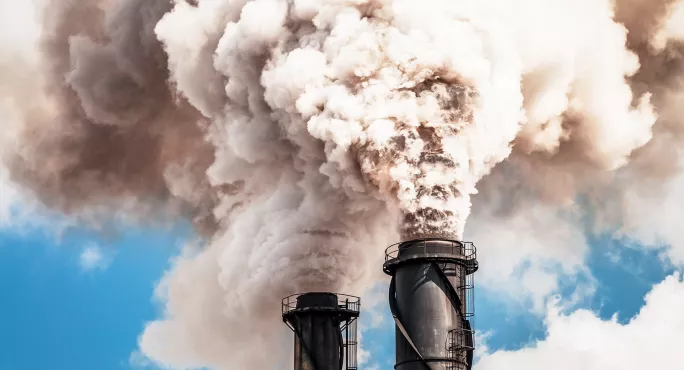- Home
- Analysis
- Specialist Sector
- Why climate change is at the heart of our primary curriculum
Why climate change is at the heart of our primary curriculum

The importance of climate change and sustainability education continues to hit the headlines, such as a recent survey showing that a third of students want to learn more about climate change in school.
Of course, there are moves underway to do this - from plans for a natural history GCSE to calls on educators to frame the situation through a lens of positive action, rather than doom-laden warnings. Meanwhile, schools in England are also required to have sustainability leads by 2025.
Climate change education is very much an area of focus for us, too, at the International Curriculum Association - chiefly through our International Primary Curriculum (IPC) that launched in 2000 and is regularly reviewed as the requirements for young people’s education evolve.
This is why, in our most recent curriculum review, we expanded International Learning to include both international-mindedness and global competence, strengthening links to the wider sustainability agenda.
To do this, we drew inspiration from the United Nations’ 17 Sustainable Development Goals (SDGs), which aim to ensure “peace and prosperity for people and the planet” and have a clear focus on education within this by urging organisations to focus on future generations.
Weaving into curriculum units
As part of our curriculum review, we looked at possible connections with the SDGs throughout the curriculum that were highlighted to schools, with most units containing a wealth of opportunities to dig deeper into issues such as sustainability, climate action, conservation, nutrition and wellbeing.
What’s more, special units that focus solely on the SDGs were also added to the curriculum, known as the SDG Challenge Series. We introduced this series to help pupils examine global issues and challenges through the lens of different perspectives and subject areas.
Since rolling out these developments to the curriculum, these have been well received by schools around the world.
Global impact
One school in Kathmandu, Nepal, reported that it worked with parents and pupils in order to help them understand the school’s renewed focus on sustainability through outdoors-based learning.
In the past year, the school has reported high satisfaction with the updated curriculum, with some pupils even taking action by implementing a rain harvesting programme for the benefit of their local community after learning about the national issue of water scarcity.
Another school in Rawang, Malaysia, worked on an IPC unit Different Places, Different Lives, which is linked to SDGs 2 (Zero Hunger) and 10 (Reduced Inequalities) and encourages young pupils to learn about organisations that help others and the associated cause and effect related to global events.
The pupils contacted a local charity that works to save the 3,000 tonnes of edible food in Malaysia that is thrown away and wasted every day. The children began to encourage one another to understand the concept of “what we want” and “what we really need” and embraced “action” by implementing a food drive to rescue unused food items and donate to charity.
Partnerships are key
While we are proud of our curriculum changes, we also know there is great work already happening around climate change education we can harness, rather than reinvent.
For example, we have forged partnerships within the climate education space, such as with Take Action Global to offer their Climate Action Project to schools in our network.
The project enables pupils and teachers to collaborate on environmental topics and a number of our schools completed the inaugural six-week programme to help pupils understand and address the impacts of the climate crisis and crucially equip them with the skills to act as agents of change.
For example, pupils at one school in Moldova spoke with Nasa experts about the future of the planet, as well as presented their ongoing sustainability work at a Climate Action Day global conference.
The future
Overall, we are hopeful our work linking our curriculum to the SDGs is helping to meet the needs of pupils around the world in their desire to learn more about climate change and act as inspiration perhaps for other education providers who may wish to do similar.
But we know climate change education is an ever-evolving area as our planet continues to change.
That is why, as we look to the future, we are hoping to implement further connections to the SDGs throughout our curricula all with the aim of improving pupils’ learning - who, after all, are the ones who must take on the challenge of protecting our planet in the future.
Sarah Blackmore is director of the International Curriculum Association
For the latest education news and analysis delivered directly to your inbox every weekday morning, sign up to the Tes Daily newsletter
You need a Tes subscription to read this article
Subscribe now to read this article and get other subscriber-only content:
- Unlimited access to all Tes magazine content
- Exclusive subscriber-only stories
- Award-winning email newsletters
Already a subscriber? Log in
You need a subscription to read this article
Subscribe now to read this article and get other subscriber-only content, including:
- Unlimited access to all Tes magazine content
- Exclusive subscriber-only stories
- Award-winning email newsletters
topics in this article



